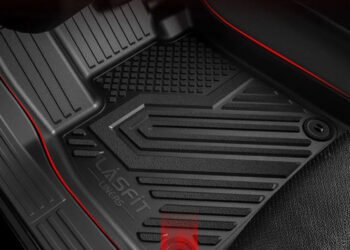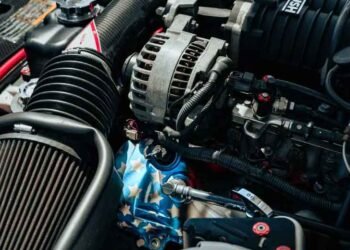The suspension system of a car is integral to its performance and safety. It is a complex network that ensures a smooth ride, maintains road contact, and supports the vehicle’s weight, encompassing parts like springs, shock absorbers, and crucial components like suspension bushings. Understanding the suspension bushings meaning, along with the roles of other components, provides an insightful look into this key system of your car.
The Role of the Suspension System
The primary role of a car’s suspension system is to provide a comfortable ride by absorbing the bumps and vibrations from the road. Additionally, it maintains tire contact with the road, which is crucial for steering, braking, and overall stability. Understanding the various components of the suspension system can enhance your knowledge of how your car operates and why maintenance is essential.
Springs: The Foundation of Comfort
Suspension springs are the backbone of the system. They absorb and release energy when the car moves over bumps. There are several types of springs used in vehicles:
- Coil Springs: Most common, they are durable and provide a smooth ride.
- Leaf Springs: Typically found in older or heavy-duty vehicles.
- Torsion Bars: Use the twisting properties of a steel bar for support.
- Air Springs: Utilise air pressure and are found in advanced suspension systems.
Shock Absorbers and Struts: Damping the Bumps
Shock absorbers and struts control the impact and rebound movement of the car’s springs and suspension. They ensure the tires remain in contact with the road for consistent handling and braking.
- Shock Absorbers: These hydraulic pumps absorb and mitigate the shock impulses.
- Struts: A structural part of the suspension system, combining a shock absorber and a spring in a single unit. They are key in the vehicle’s alignment and handling.
Control Arms, Bushings, and Ball Joints: Ensuring Smooth Motion
These components work together to allow the wheels to move up and down and pivot as you steer.
- Control Arms: These are hinged suspension links between the chassis and the suspension upright or hub that carry the wheel.
- Bushings: Made from rubber or polyurethane, bushings cushion and reduce friction within the joints. Understanding the suspension bushings meaning reveals their role in reducing vibrations and noise, enhancing ride comfort.
- Ball Joints: These spherical bearings allow for controlled, multidirectional movement.
Sway Bars: Stabilizing the Ride
Sway bars, also called anti-roll bars, are torsional spring bars that reduce the car’s body roll during sharp turns or uneven road surfaces. They connect opposite wheels together through short lever arms linked by a torsion spring, enhancing stability and balance.
The Importance of Wheel Alignment
Wheel alignment is a vital part of the suspension system. Proper alignment ensures the tires are angled correctly, impacting the vehicle’s handling, tire wear, and overall safety. Periodic alignment checks are essential for maintaining optimal performance.
Maintenance: Keeping the System in Check
Regular maintenance of the suspension system is key to its longevity and performance. This includes inspecting shocks and struts for leaks, checking springs for wear or damage, and ensuring all bolts and bushings are in good condition. Regular checks can prevent more significant issues down the road.
Understanding Common Suspension Problems
Common suspension problems include a rough ride, uneven tire wear, and poor handling. These can often be traced back to worn or damaged components within the suspension system. Early detection and repair are crucial for maintaining the safety and performance of the vehicle.
Upgrades and Modifications
Various suspension upgrades are available for those looking to enhance their vehicle’s performance. These range from performance shocks and struts to upgraded sway bars and lowering springs. Each modification has its benefits and should be chosen based on the desired outcome and driving conditions.
Conclusion
The suspension system is critical to your vehicle, ensuring comfort, safety, and performance. Understanding its various parts and their functions helps in appreciating the complexity and importance of this system. Regular maintenance and awareness of signs of wear and tear can significantly impact your vehicle’s longevity and driving experience. Whether for daily commutes or adventurous drives, a well-maintained suspension system is key to an enjoyable and safe journey.












